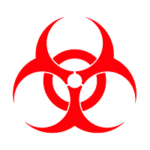Ever noticed a person breathing rapidly and wondered why? Then, there is a high chance that the individual is suffering from tachypnea. It is more than just fast breathing, it’s a medical red flag. Tachypnea is a condition that affects individuals with respiratory conditions, asthma, heart failure, and anxiety disorders. The normal respiratory rate for an average adult is 12 to 20 breaths per minute. Patients with tachypneic breathing may have rates exceeding 20 breaths per minute, which can lead to decreased oxygen intake, fatigue, and other health complications. From respiratory conditions to anxiety, tachypnea affects millions globally. Read on to learn more about tachypnea, its symptoms, causes, and other important details.
When Does Tachypnea Occur?
Tachypnea, or tachypneic breathing, often involves shallow breathing. When the body’s oxygen or carbon dioxide levels are too low or too high, an individual may breathe faster than usual to take in more oxygen. This prompts the human body to compensate by increasing the breathing rate.
The brainstem is responsible for regulating breathing by detecting changes in blood gases, which lead to adjustments in breathing rate. Apart from rapid breathing, tachypnea can also lead to symptoms like dizziness or fatigue because of reduced oxygen delivery to tissues.
Tachypneic breathing can also occur when the body is at rest. It may account for over 60 breaths per minute in newborns and 20 breaths in adults. Infants typically recover from transient tachypnea within 2 to 3 days. Older children and adults also recover quickly after treatment for the underlying cause of tachypnea. However, the condition may recur if the underlying cause is not treated.
What Are the Common Symptoms of Tachypnea?
When a person undergoes tachypnea, they experience fast, shallow breathing. However, there are some other symptoms, which are discussed as follows:
- Change in Skin or Nail Color
During tachypnea, cyanosis occurs when nails, skin, or lips turn blue or gray. It usually indicates lower blood levels in the body and is caused by poor lung function or reduced oxygen transport.
Chest pain in tachypnea may result from overworked respiratory muscles or increased pressure on the lungs and heart. It can also signal underlying conditions like respiratory infections, asthma, or even cardiac issues requiring immediate attention.
A feeling of difficulty or obstruction in breathing can occur due to airway narrowing, lung conditions, or fluid buildup. This symptom, known as dyspnea, may limit oxygen exchange and leads to fatigue and other complications if left untreated.
- Feeling Like You Can’t Get Enough Air
This sensation, also called “air hunger,” reflects the body’s struggle to meet oxygen demands. It occurs when the lungs cannot efficiently exchange oxygen and carbon dioxide, often resulting in shortness of breath and feelings of suffocation.
Read More: Paradoxical Breathing: Symptoms, Causes, and Treatments
How Do You Identify The Causes of Tachypnea?
The causes of tachypnea can be both physiological and pathological, and they vary from case to case. The proper identification of the cause is important to finalise the most appropriate treatment option. Here is an overview of all the main causes of tachypnea:
A physiological cause refers to the body’s normal ability to correct an abnormal condition. Tachypnea is not an abnormal bodily response but rather a normal response to something abnormal occurring in the body. Three primary physiological processes may cause tachypnea:
- Imbalance Between Respiratory Gases
Hypoxemia refers to a lower oxygen level in the blood and can result from ventilation-perfusion (V/Q) mismatch, hypoventilation, or diffusion impairment. Each condition contributes to imbalances in respiratory gas exchange. In V/Q mismatch, lungs receive oxygen but lack adequate blood flow or vice versa, which limits effective oxygenation.
Hypercapnia refers to an increased level of carbon dioxide, which also leads to respiratory imbalances. Diffusion impairment occurs when the transfer of gases between alveoli and blood is hindered, which causes low blood oxygen levels. Both hypoxemia and hypercapnia can cause tachypnea.
- Acid-base Imbalance
Acid-base imbalances occur when the blood’s pH shifts from its normal range. Metabolic acidosis, a condition where the blood becomes too acidic, triggers increased ventilation. This response helps the body expel excess carbon dioxide, reducing acidity and restoring balance.
In contrast, respiratory acidosis occurs when inadequate gas exchange in the lungs leads to a buildup of carbon dioxide. This increases acidity in the blood and reduces oxygenation, often causing tachypnea as the body attempts to compensate and maintain proper oxygen and pH levels.
- Fever
Breathing becomes more rapid as the body tries to release heat during a fever. It causes dehydration, which thickens mucus and impairs gas exchange. This condition may lead to tachypnea as the body compensates for the abnormality.
Pathological causes are medical conditions that often result in tachypnea and imply other underlying health issues in the patient.
- Lung-related Conditions
Lung diseases can lower oxygen levels and raise carbon dioxide levels in the body. Rapid, shallow breathing helps restore these levels. Some of these lung related conditions include pneumonia, pulmonary fibrosis, collapsed lung, chronic obstructive pulmonary disease (COPD), asthma, pulmonary embolism, lung cancer, and more.
- Heart-related Conditions
Conditions like anemia, heart failure, or underactive thyroid can cause cardiovascular changes that lead to tachypnea. These changes reduce the oxygen-carrying capacity or impair the heart’s ability to pump blood efficiently. As a result, faster breathing occurs to compensate for the loss of blood or oxygen in the body.
- Hyperventilation
This condition may occur due to anxiety, pain, or other factors. It happens when a person starts breathing very quickly, which causes an imbalance between oxygen intake and carbon dioxide expulsion, reducing its levels in the body.
- Metabolic Acidosis
When blood acid levels are too high, the breathing rate increases to expel carbon dioxide. Causes include diabetic ketoacidosis, lactic acidosis, and hepatic encephalopathy. This compensatory mechanism, called Kussmaul respiration, helps restore the body’s pH balance but can lead to respiratory fatigue if left untreated.
- Central Nervous System-related Conditions
Brain abnormalities, including tumors and injuries to the brainstem, can disrupt normal breathing patterns, leading to tachypnea, which is rapid and shallow breathing. Conditions like strokes and traumatic brain injuries may also impair the brain’s ability to regulate breathing effectively.
- Use of Certain Medications
Drugs like aspirin, stimulants, and marijuana can cause a shallow breathing rate. Sometimes, chemotherapy can lead to anemia, and worsening tachypnea. When there are fewer red blood cells to carry oxygen, breathing becomes more rapid to correct the condition.
Read More: What is Tachycardia: Symptoms, Reasons & Remedies
How Doctors Treat Tachypneic Breathing?
A healthcare provider may administer oxygen through a tube or a mask in your nostrils to treat tachypnea. This treatment is common for infants and younger children.
Treatment for tachypnea in adults and older children involves taking slow, deep breaths to stop hyperventilation. This means slowly breathing in through your nose and exhaling through your mouth or nose again. This breathing technique can help you relax by allowing your lungs to fill up with air and expand completely.
If tachypnea causes severe respiratory distress, you should seek emergency medical treatment. This might include pressurized oxygen via a continuous positive airway pressure (CPAP) machine. Another alternative is to use a ventilator machine to move air in and out of your lungs.
Treating the underlying cause resolves the symptom and prevents it from recurring. Depending on the cause of tachypnea, treatment may include medicines like anticoagulants, antibiotics, or antihistamines, using an inhaler, and participating in cognitive behavioral therapy for anxiety.
How is Tachypnea Diagnosed?
The diagnosis of tachypnea will vary depending on medical conditions, age, current medications, and other symptoms. Some diagnostic tools used in the process may include:
- Oximetry: A “clip” on your finger is used to estimate the oxygen level in your blood.
- Arterial Blood Gases (ABGs): These tests measure carbon dioxide, oxygen, and pH levels in your blood. If the pH is low, further tests may be done to find causes like increased blood acid levels or liver problems.
- Chest X-ray: This quickly identifies some causes of tachypnea, such as a collapsed lung.
- Chest Computerized Tomography (CT): A CT scan can help identify lung diseases or tumors.
- Pulmonary Function Tests: These help diagnose conditions like COPD and asthma.
- Glucose Test: A blood sugar test helps rule out or confirm diabetic ketoacidosis, which occurs when the body produces too many blood acids called ketones.
- Electrolytes: Measuring sodium and potassium levels can help evaluate some causes of tachypnea.
- Hemoglobin: A complete blood count and hemoglobin test help check for anemia and infections.
- Electrocardiogram (EKG): This test can identify evidence of a heart attack or abnormal heart rhythms.
- VQ Scan: This measures how air moves in and out of your lungs and checks blood flow to them. It’s used when a blood clot is suspected of blocking one of the lung arteries.
- Brain Magnetic Resonance Imaging (MRI): If no obvious cause of tachypnea is found, a brain MRI may be used. It can help rule out brain abnormalities such as tumors.
- Toxicology Screen: Certain drugs, including over-the-counter, prescription, and illegal drugs, can cause tachypnea. If the cause of tachypnea is unknown, a toxicology screen is often done in emergencies.
How to Prevent Tachypnea?
Tachypnea, or rapid, shallow breathing, can often be prevented by addressing its underlying causes. Implementing certain lifestyle changes and targeted strategies can significantly reduce the risk of experiencing this condition. Below are actionable preventive measures:
- If asthma is the cause, you can avoid allergens, strenuous exercise, and irritants like smoke and pollution.
- Dehydration often leads to rapid breathing, so make sure you remain hydrated sufficiently.
- Additional steps to prevent tachypneic breathing include taking slow, deep breaths using your diaphragm, which gives you enough time for full exhalation.
- You may also try breathing in through your nose and out through your mouth. Indulge in yoga or meditation to manage stress and reduce your episodes of shallow breathing.
Tachypnea is not a normal condition and should always be evaluated and treated by a healthcare provider. The condition is an emergency if it is accompanied by chest pain, fever, or chest retraction.
Manage Tachypnea With Effective Strategies!
Tachypnea may be a sign of a medical concern, though its severity can vary. If tachypnea occurs, avoid self-diagnosis and seek immediate medical attention. Early intervention can prevent complications such as oxygen deprivation or worsening respiratory distress.
You can also enroll in an ACLS course to learn more about these conditions. This is especially important in cases involving newborns and young children, who may not be able to convey their symptoms fully. Contact a healthcare provider immediately if you notice any symptoms, and seek treatment to prevent further health complications.






